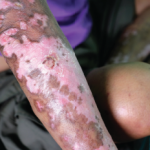In 2005, a workforce study conducted by the ACR projected a shortage of 2,500 rheumatologists by 2025.1 This resulted in an increase in the number of rheumatology fellows trained and the development of online training programs for nurse practitioners and physician assistants in rheumatology. In 2014, Daniel Battafarano, DO, MACP, was a member of the…








